[Biscuitroots and Desert Parsleys: The Genus Lomatium East of the Cascade Mts. of Oregon and Washington]
Bare-stem Desert Parsley, Barestem Biscuitroot, Indian-consumption-plant, Pestle Parsnip
Lomatium nudicaule
Synonyms: Cogswellia nudicaulis, Lomatium platyphyllum

Barestem desert parsley as seen
along the Round Mountain South Trail #805 about one-half way between the south trailhead at FS Rd #42 and Round Mt., Ochoco National Forest.........May 28, 2016.
Characteristics:
Bare-stem desert parsley is a fairly easy to identify
desert parsley (at least in the Pacific Northwest) due to the erect, solitary
to several hollow stems which inflate or increase greatly in diameter directly
beneath the inflorescence. The naked stems range from 20-90 cm high and are
generally both glabrous and blue-glaucous. The firm leaves are found only near
the base and are ternately or ternate-pinnately 1-3 times compound with 3-30
veiny, often petiolate lanceolate to ovate leaflets from 2-9 cm long and 1-6
cm wide. The leaflet margins may be entire or may be toothed at the tips.
The inflorescence is an umbel of numerous small
umbelets which are usually widely spaced when in flower. The stems which hold
the umbelets in the umbel extend unequally from 6-20 cm. The flowers are yellow.
The fruit is 7-15 mm long, oblong to elliptic in shape, narrowing to a short
beaklike tip. The wings of the fruit are up to one-half as wide as the body.
Habitat:
Bare-stem desert parsley maybe found from the lowlands
to moderate elevations in the mountains on dry, open or sparsely wooded places,
and is often mixed with sagebrush or ponderosa pine.
Range:
Bare-stem desert parsley may be found from southern
British Columbia south along both sides of the Cascade Mts. through Washington
and Oregon to central California and east to southwestern Alberta, western and
southern Idaho, and western Utah.
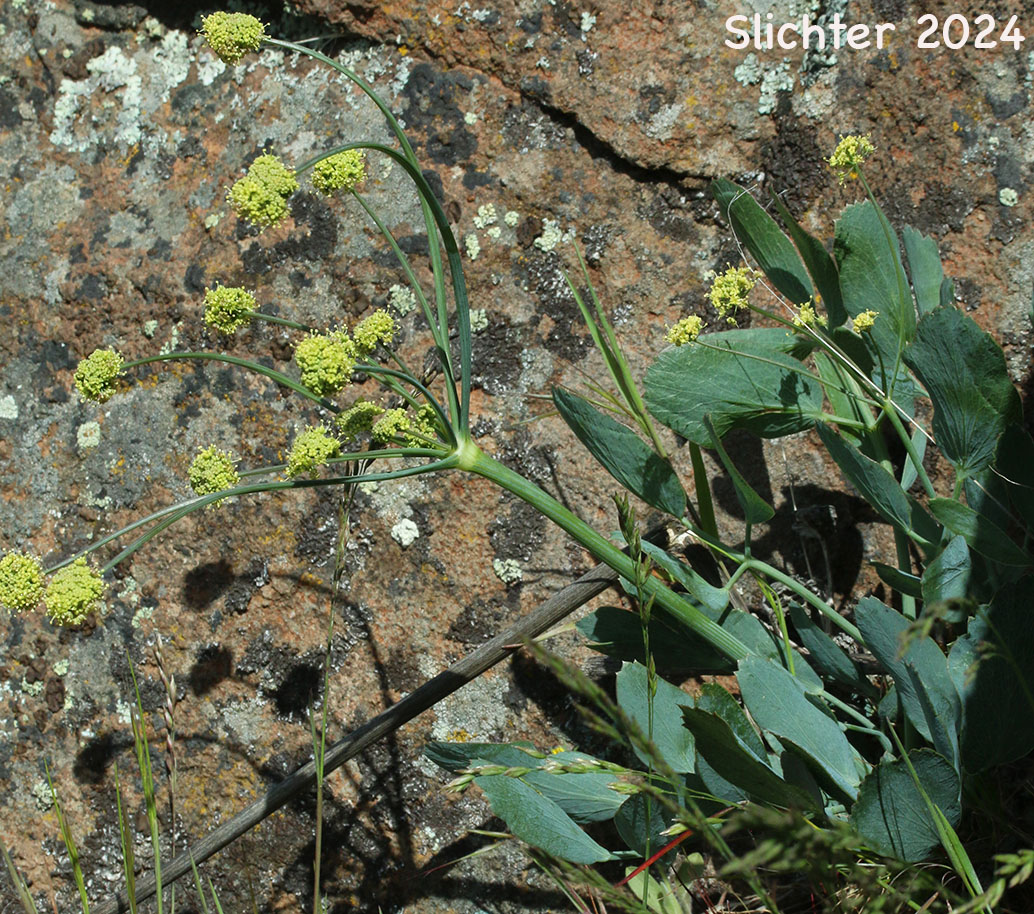 -
- 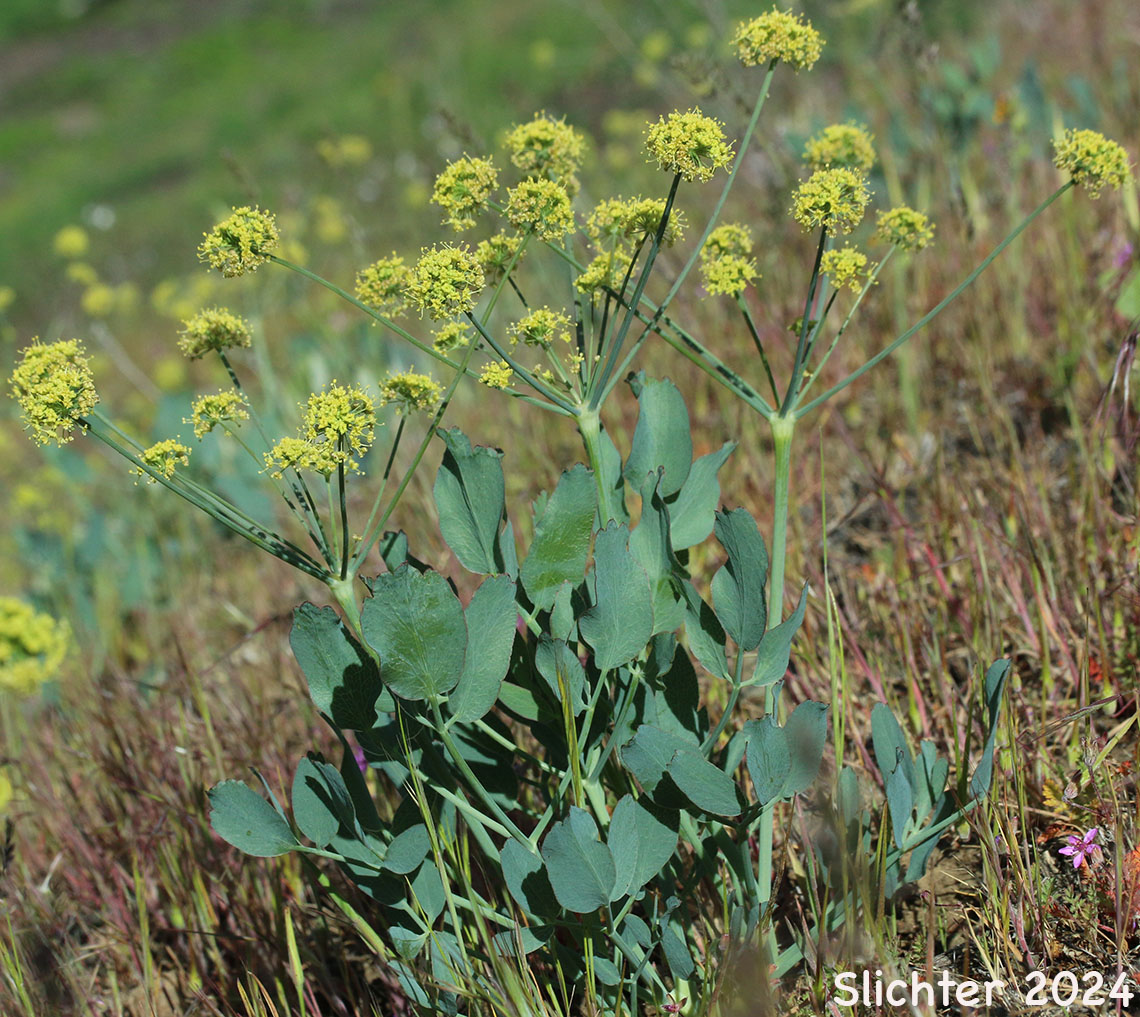
Bare-stem desert parsley blooming along the trails at the Deschutes River State Recreation Area and adjacent state wildlife management areas.....April 7, 2024.
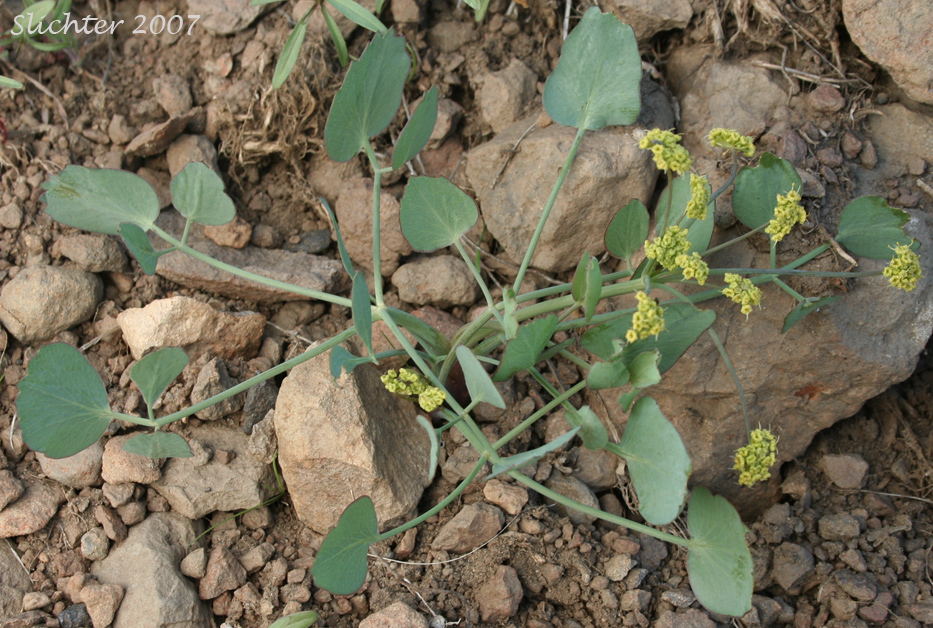 -
- 
The photo at left shows bare-stem desert parsley as seen along Cowiche Mill Road several miles west of Yakima, WA.........March 28, 2007.
The inflated upper stems are not visible below each inflorescence yet (as the plants are very young) but the
distinctive, broad, glaucous leaflets are easily seen. The photo at right shows barestem desert parsley on BLM lands about one-half mile east of the gated trailhead for the Simcoe Mountains Unit of the Klickitat Wildlife Area......May 22, 2022.
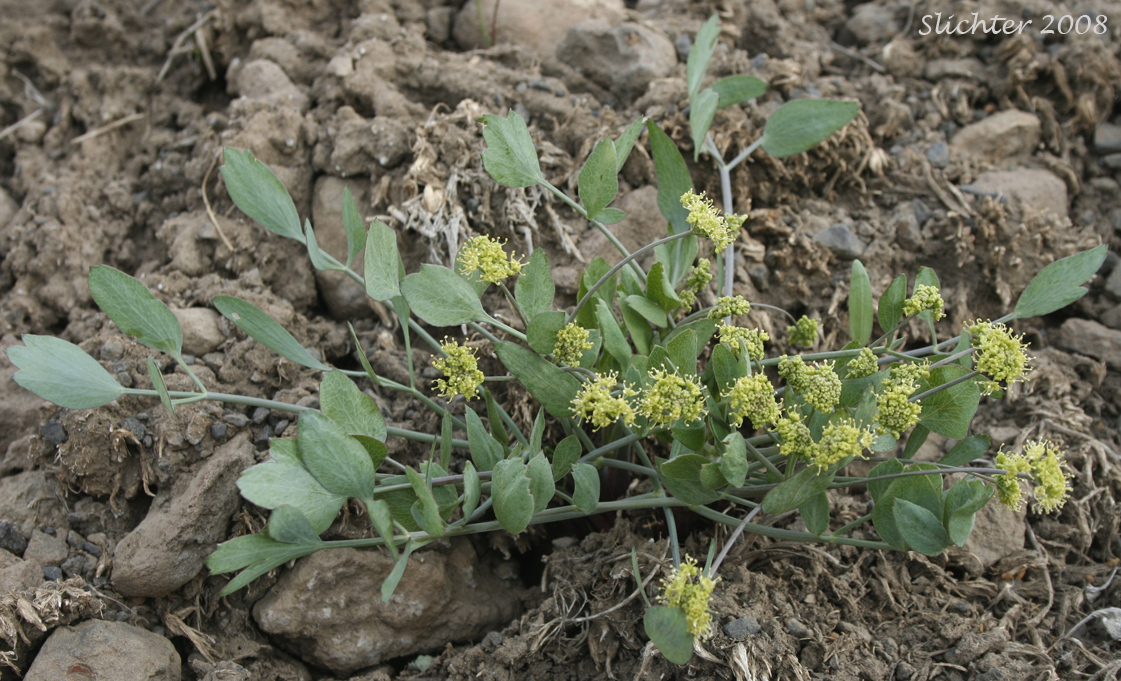 -
- 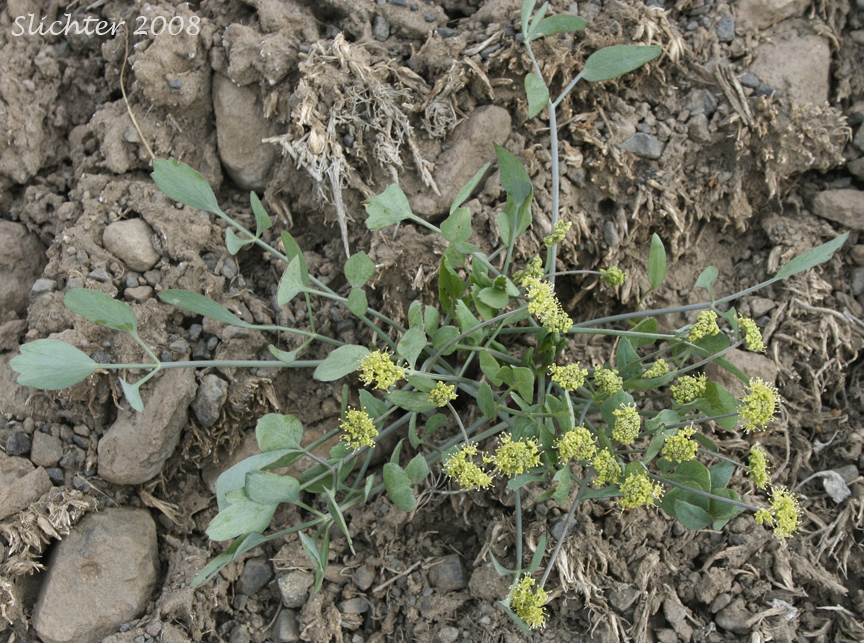
The photos above show two views of barestem desert parsley as seen along Cowiche Mill Road to the west of Yakima, WA.........March 23, 2008.
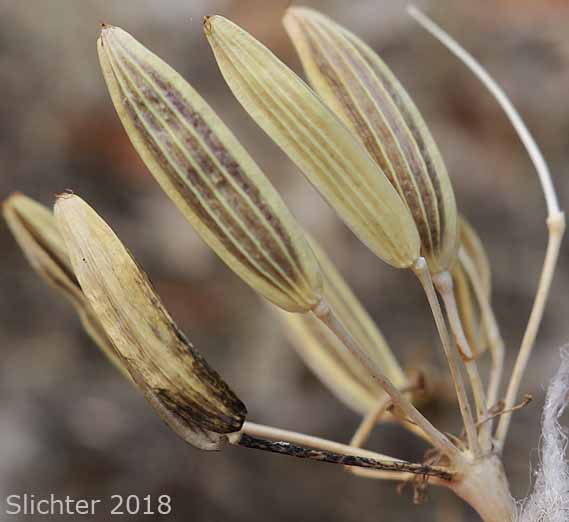 -
- 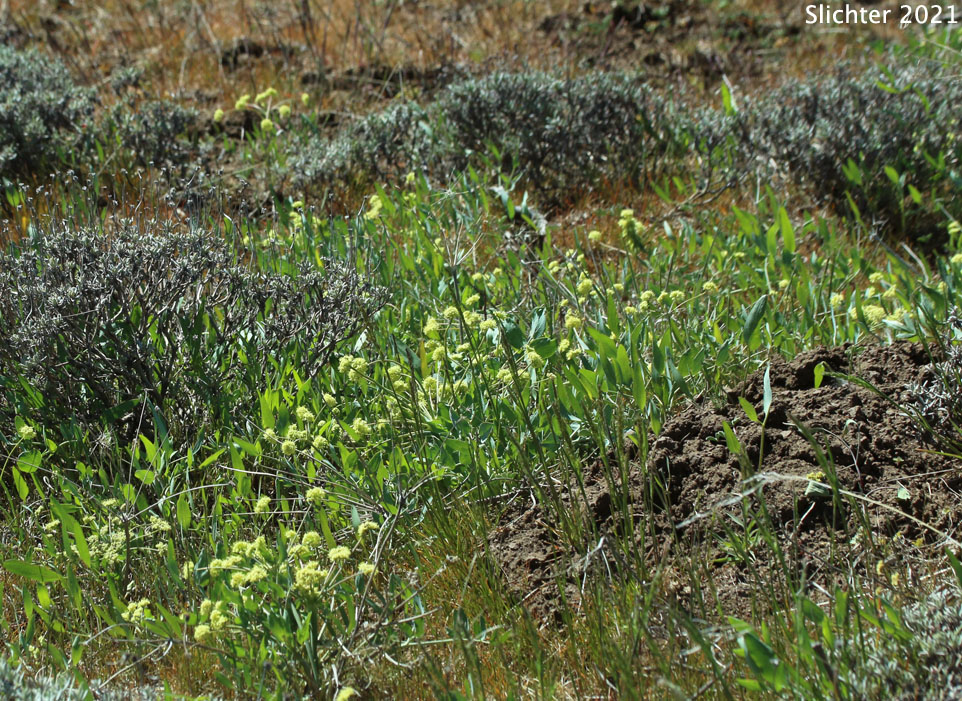
Ripe seed head of barestem desert parsley as seen at left in vernally moist scablands at Brooks Memorial State Park........October 10, 2018. The photo at right shows the habitat of barestem desert parsley observed in a swale above the north rim of Rock Creek canyon, about one-quarter mile south of the southern boundary of the Simcoe Mountains Unit of the Klickitat Wildlife Area.....April 15, 2021.
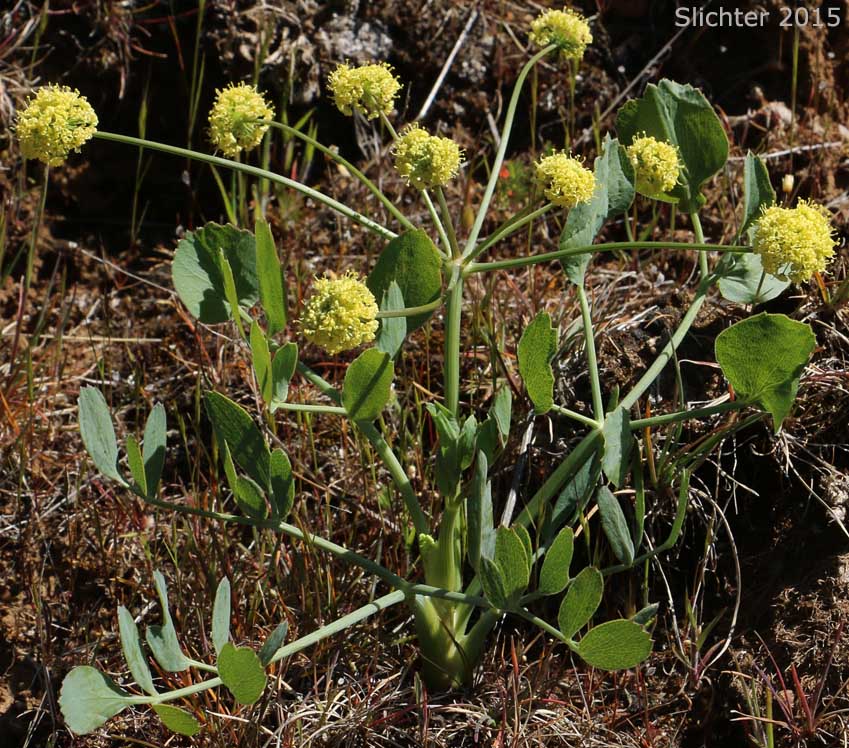 -
- 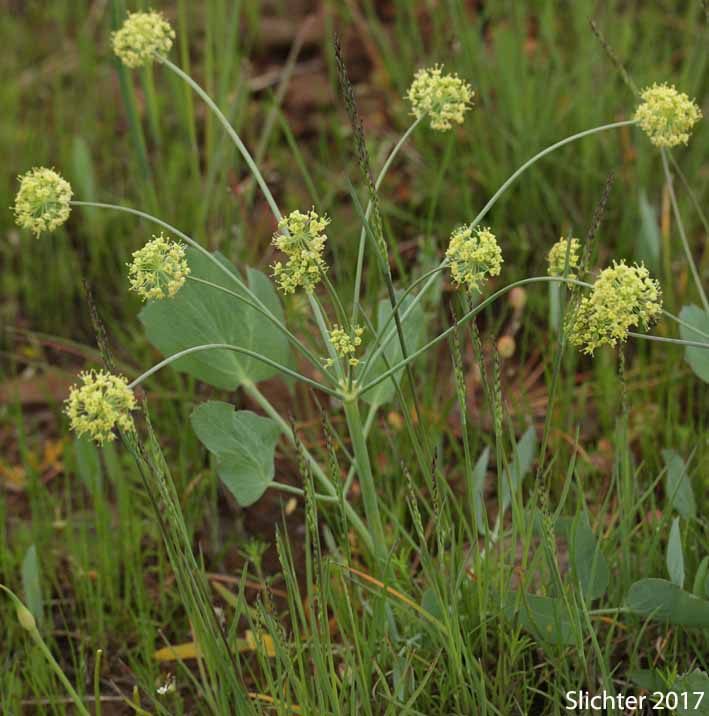
The photo at left shows bare-stem desert parsley. The inflated upper stems are visible below each inflorescence as well as the broad, glaucous leaflets. The photo at right shows bare-stem desert parsley as seen on scablands between FS Road 4040 and the North Fork Crooked River Wild and Scenic River.........May11, 2017.
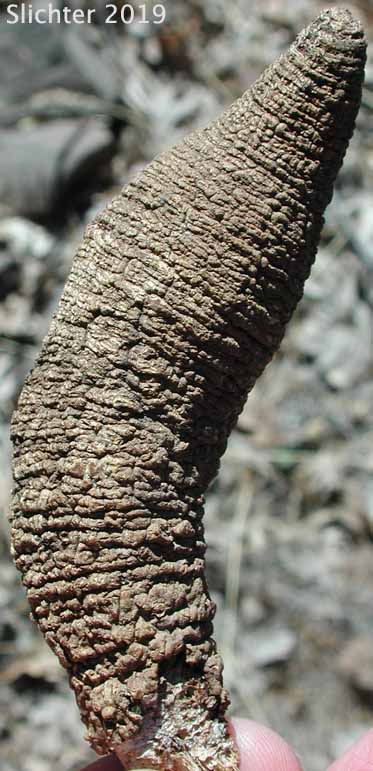
Leaf scars on the crown of bare-stem desert parsley as seen along Oak Creek Road, Oak Creek Wildlife Area......June 8, 2019.
 -
- 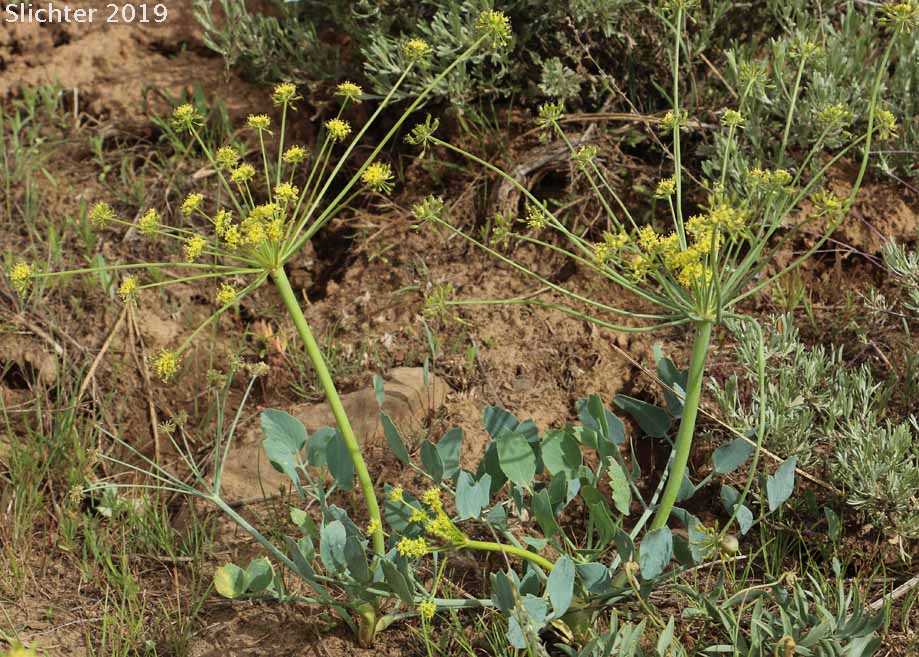
Bare-stem desert parsley as seen at left at the Simcoe Mountains Unit of the Klickitat Wildlife Area........May 11, 2017. The photo at right shows bare-stem desert parsley in bloom along What Road near the DNR-Wenatchee National Forest boundary, Yakima County, WA......May 24, 2019.
Paul Slichter
